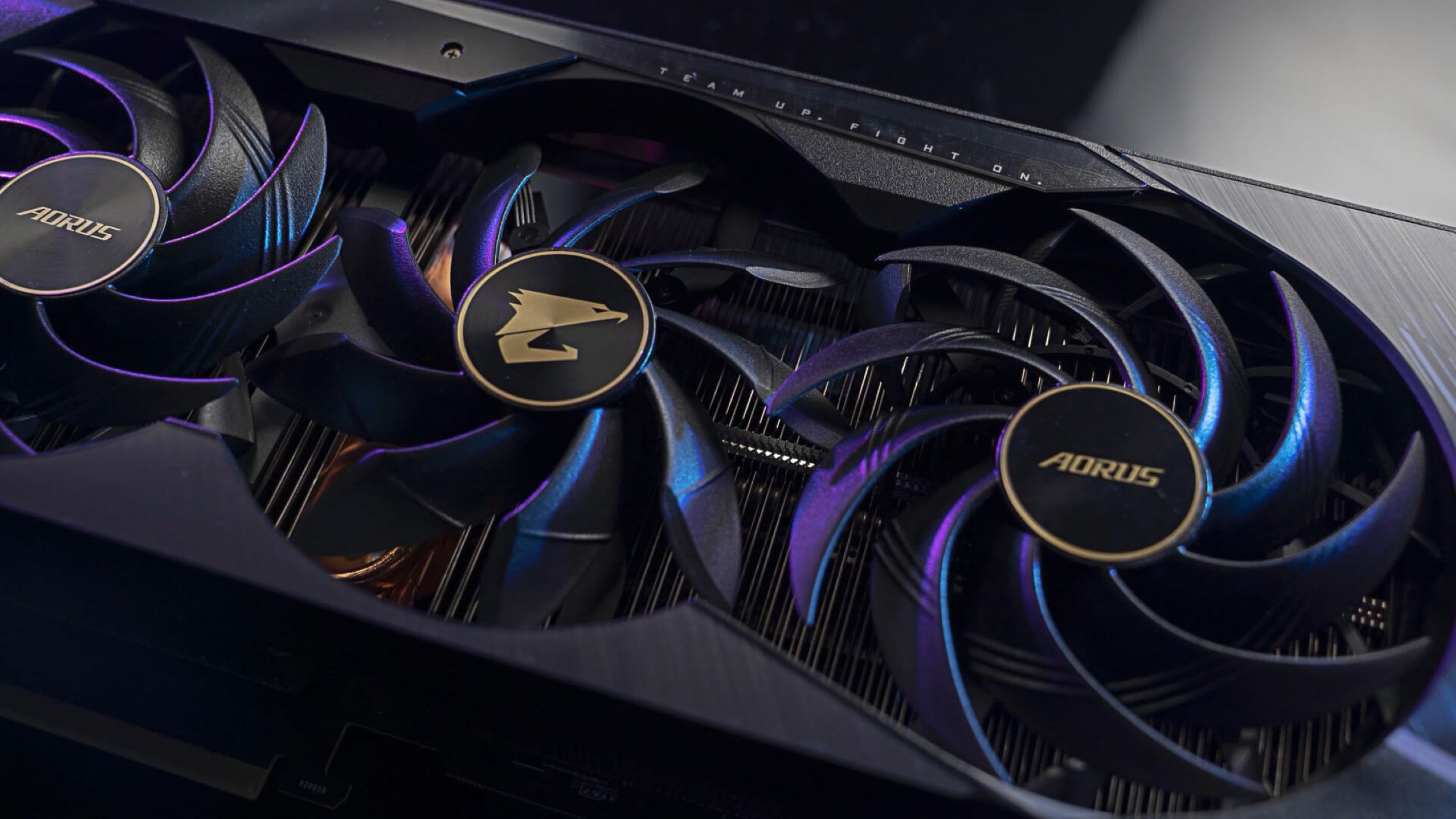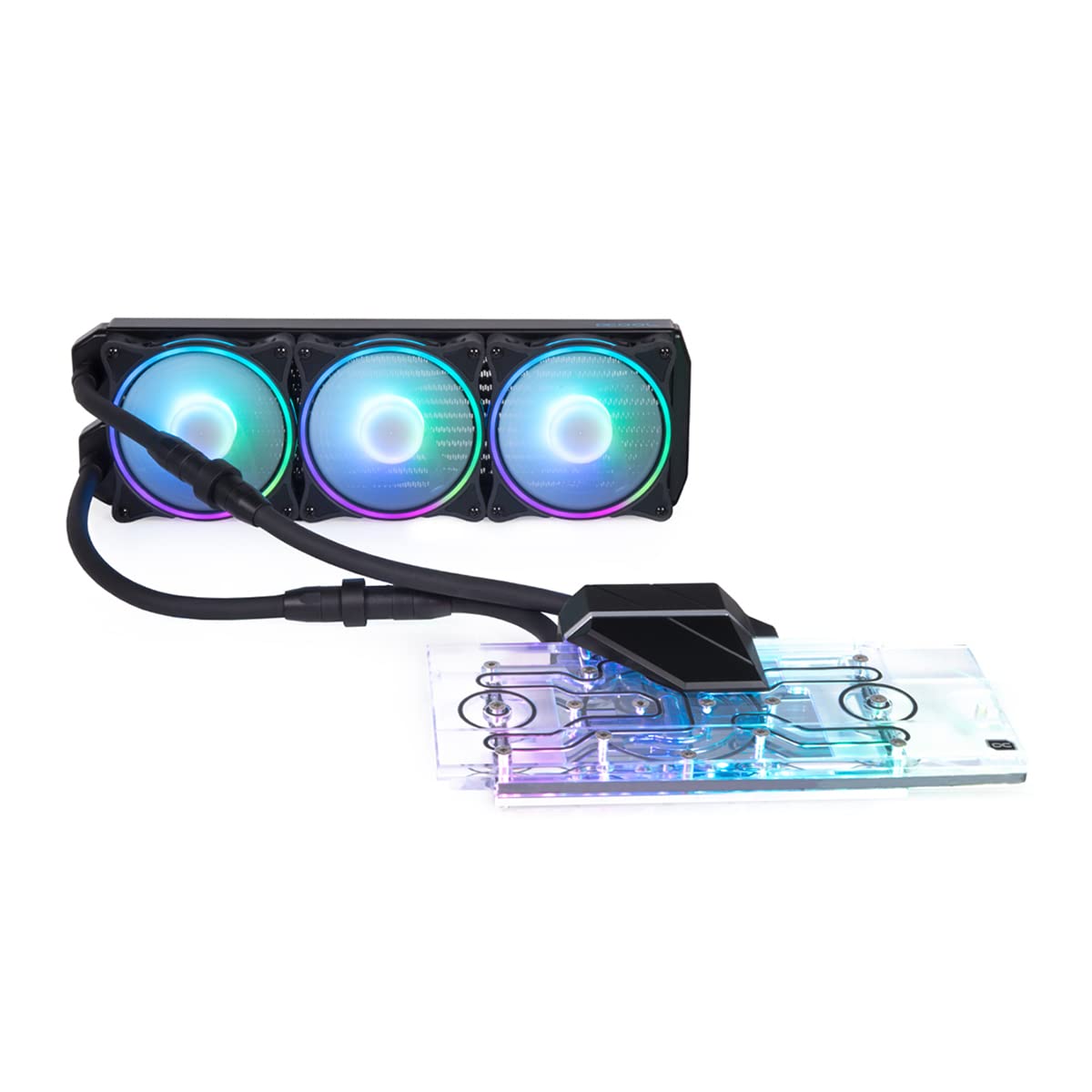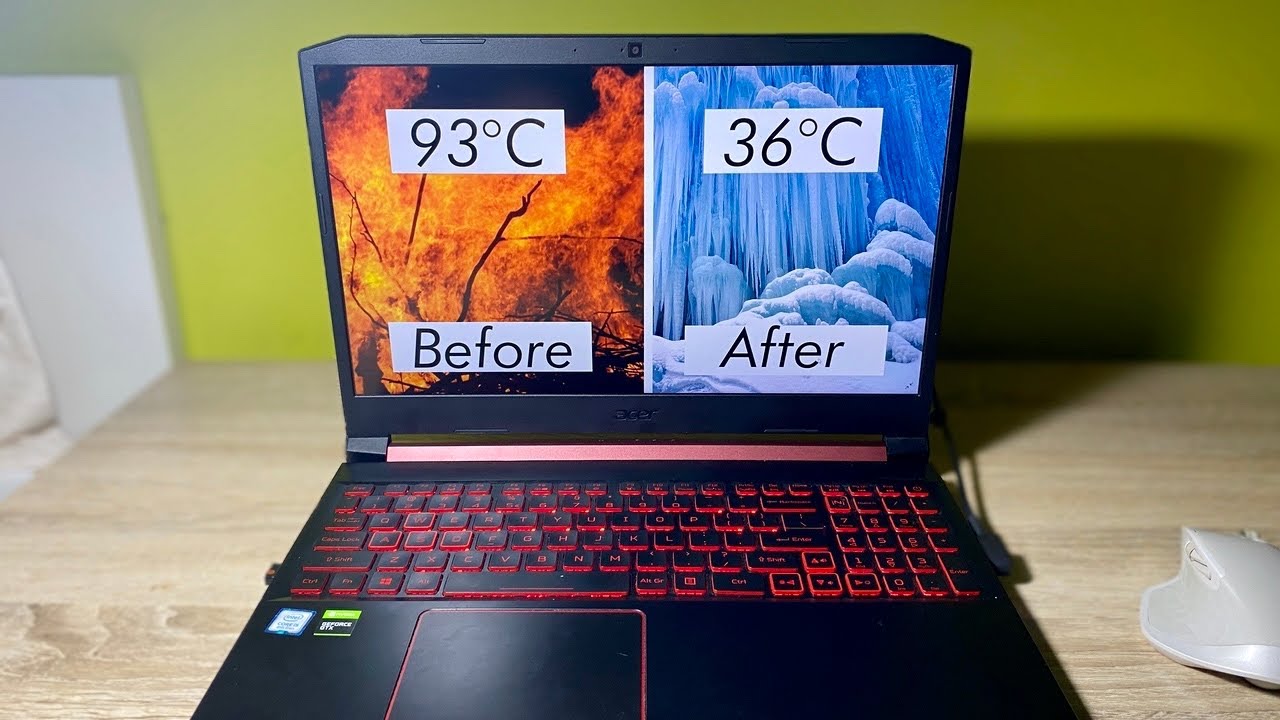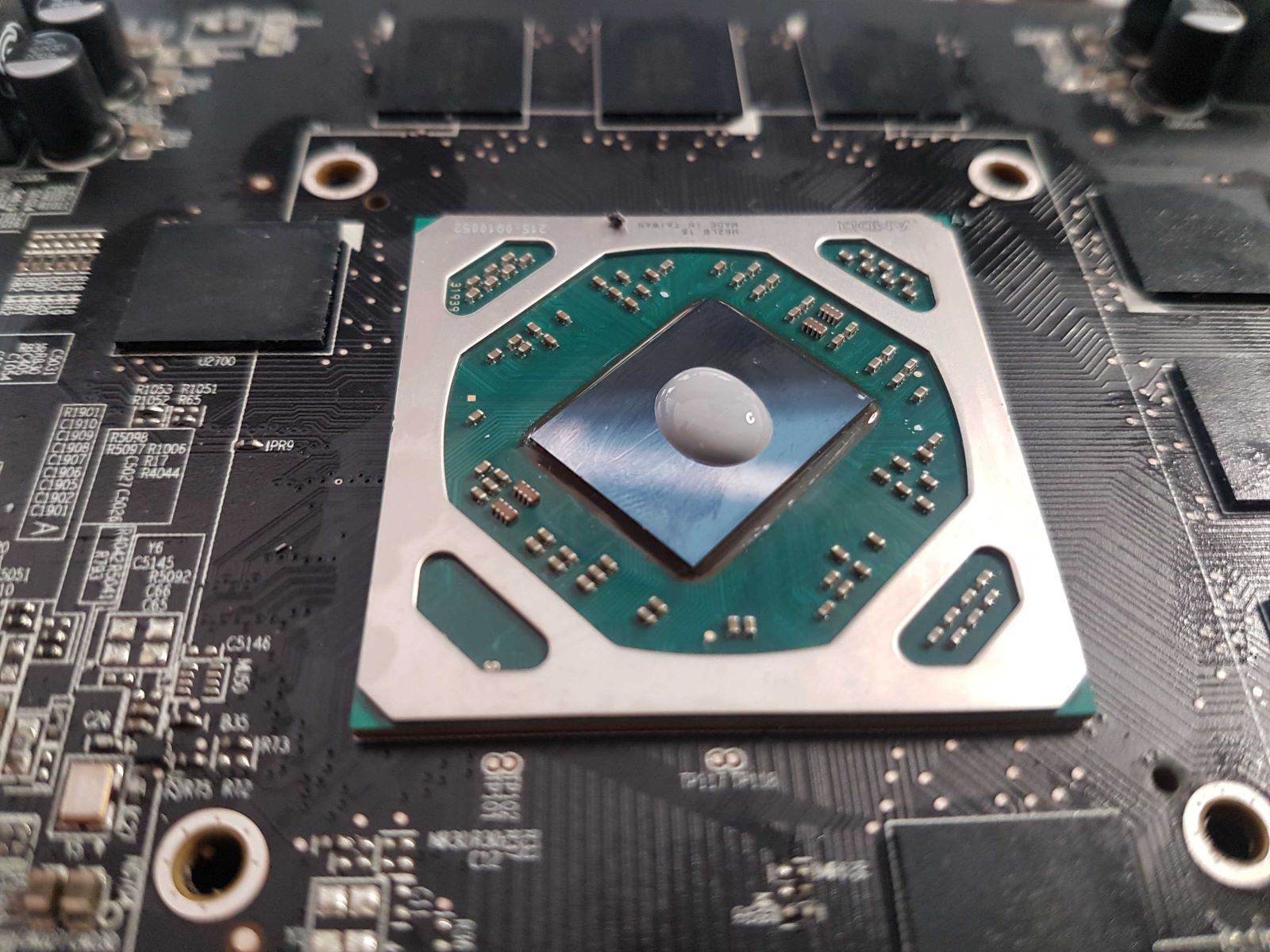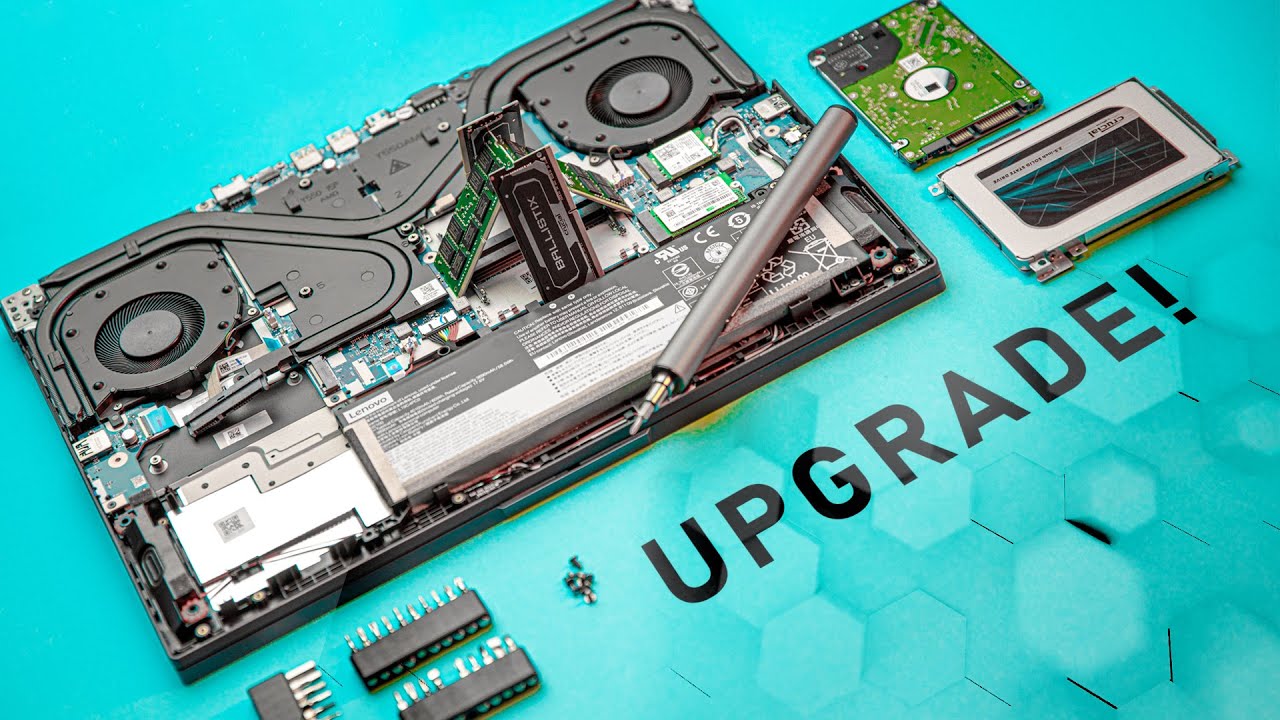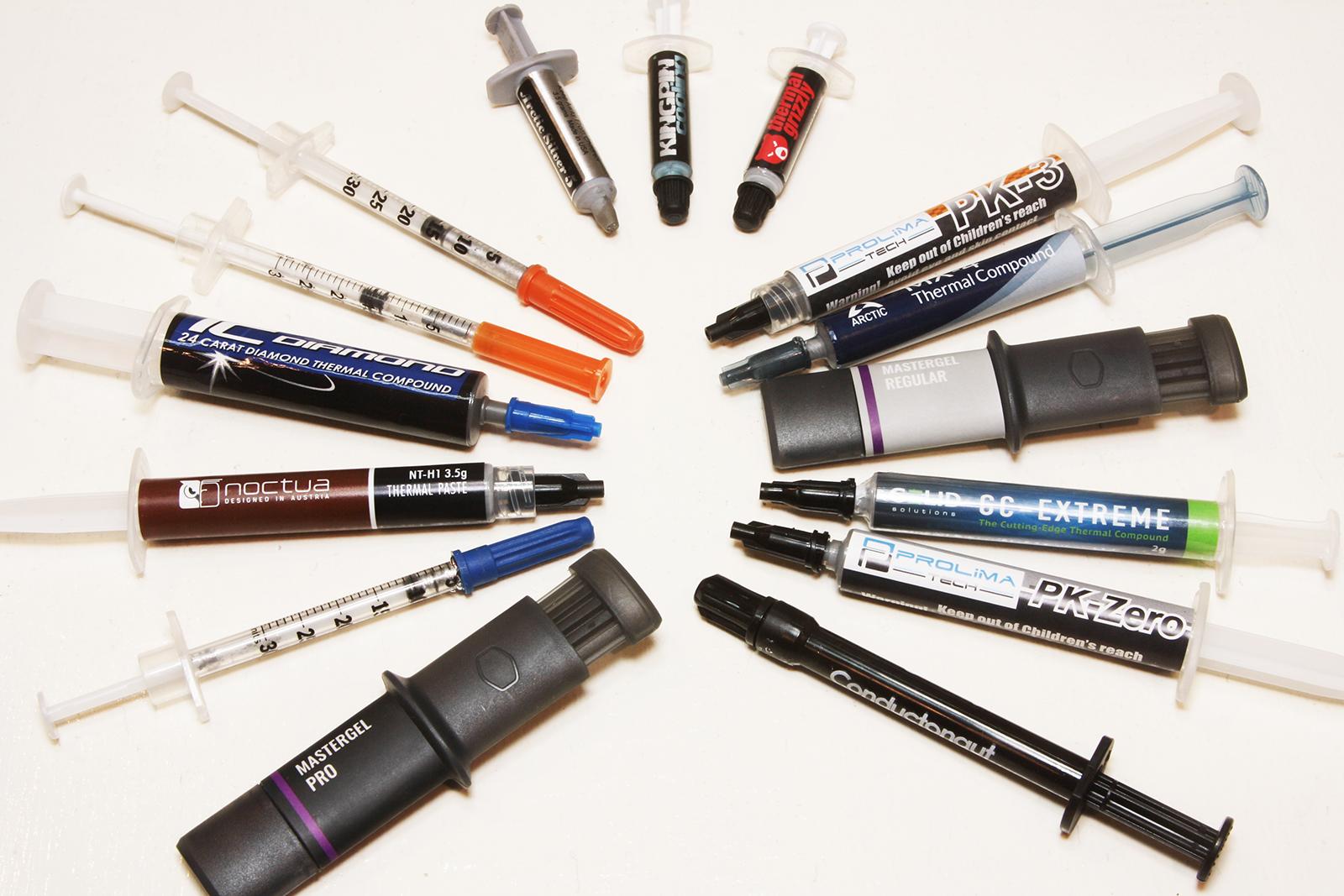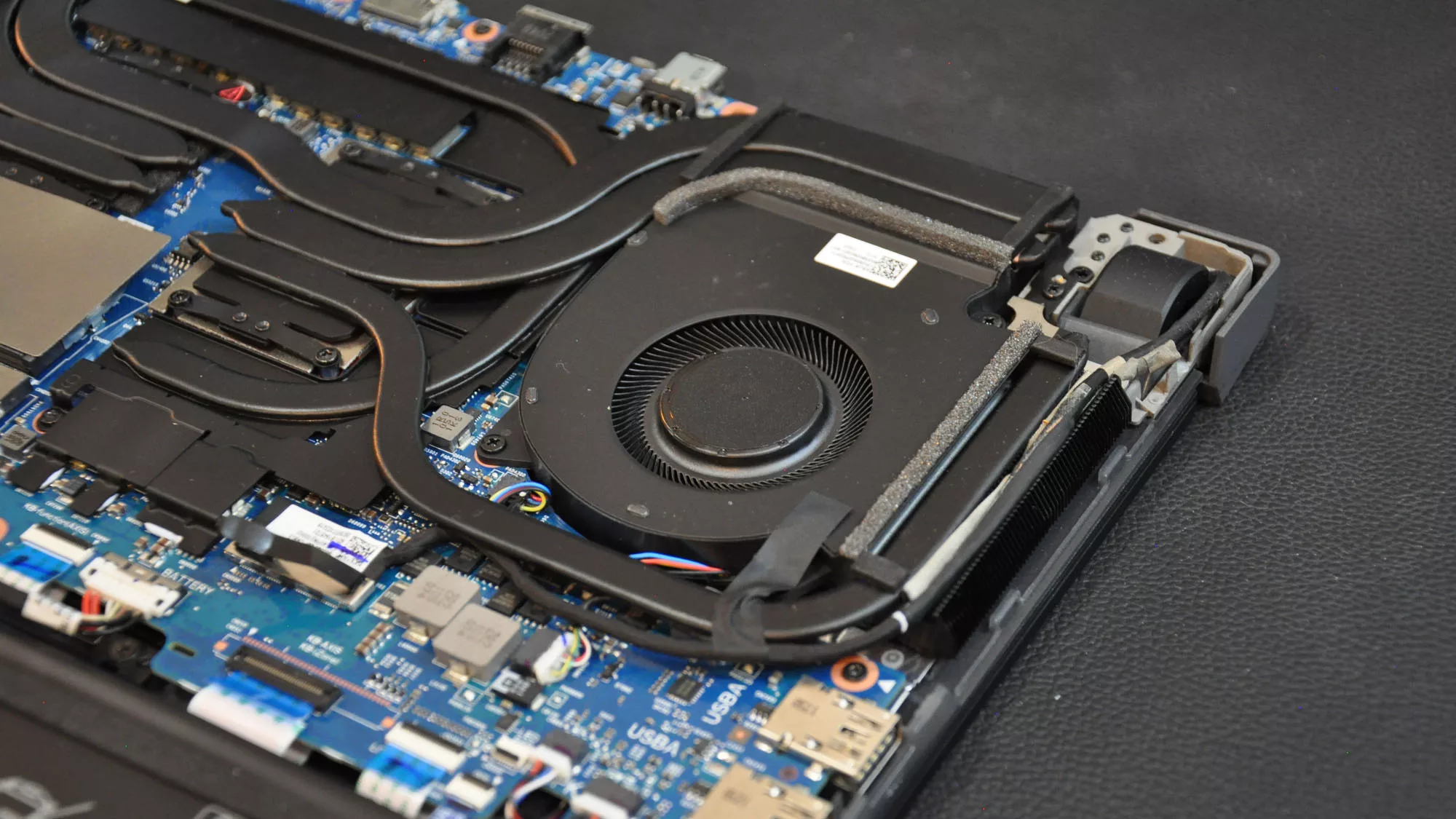Introduction
Gaming laptops are a popular choice for gamers who want the convenience of portable gaming without sacrificing performance. These powerful machines generate a considerable amount of heat due to their high-performance components, such as processors and graphics cards, which can cause overheating and impact performance. To combat this, thermal paste is used to improve heat transfer between the components and the cooling system, ensuring efficient heat dissipation.
Thermal paste, also known as thermal compound or TIM (Thermal Interface Material), is a silicone-based compound with high thermal conductivity. It fills microscopic gaps and irregularities between the CPU/GPU and heatsink, creating a smooth and effective thermal interface. By facilitating better heat transfer, thermal paste helps prevent overheating and improves the overall cooling performance of the laptop.
Without proper thermal paste application, the heat generated by the laptop’s components cannot be efficiently transferred to the cooling system. This can lead to higher temperatures, reduced performance, and even potential damage to the hardware. Therefore, the quality and condition of the thermal paste are crucial for maintaining optimal system temperature and overall longevity of the gaming laptop.
However, thermal paste does not last forever. Over time, its effectiveness can degrade due to factors such as aging, drying out, or exposure to high temperatures. As a result, the thermal paste may need to be replaced to maintain optimal cooling performance. In this article, we will explore the factors that affect the lifespan of thermal paste and discuss how often it should be replaced on a gaming laptop.
What is thermal paste?
Thermal paste, also known as thermal compound or TIM (Thermal Interface Material), is a specialized substance used to improve the heat transfer between the central processing unit (CPU), graphics processing unit (GPU), and their respective heatsinks. It is a crucial component in the cooling system of a gaming laptop.
Thermal paste is made up of a combination of materials, most commonly including silicone and metal particles such as silver, aluminum, or zinc. The silicone provides the compound with its viscosity and adhesive properties, while the metal particles enhance its thermal conductivity.
The primary purpose of thermal paste is to fill in microscopic imperfections on the surfaces of the CPU/GPU and the heatsink. These imperfections, such as tiny air gaps or surface irregularities, can hinder the efficient transfer of heat between the two components. The thermal paste fills these gaps, creating a more solid and continuous thermal pathway for heat dissipation.
When the gaming laptop is in use, the CPU and GPU generate heat. This heat needs to be conducted away from the components and dissipated into the surrounding environment. The thermal paste acts as a bridge, ensuring proper heat transfer between the hot components and the heatsinks.
By improving thermal conductivity, thermal paste optimizes the efficiency of the cooling system. It helps to distribute the heat evenly across the surface of the heatsink, allowing it to be dissipated more effectively through the laptop’s cooling fans. This prevents overheating and ensures that the components can operate at their optimal temperatures.
Thermal paste is an essential component for any gaming laptop. Without it, the heat generated by the CPU and GPU would not be efficiently transferred to the cooling system, resulting in increased operating temperatures. Over time, this can lead to performance degradation, instability, and even permanent damage to the components.
In the next section, we will explore why thermal paste is particularly important for gaming laptops and how it affects their overall performance and longevity.
Why is thermal paste important for gaming laptops?
Gaming laptops are designed to handle demanding tasks and run resource-intensive games. This high level of performance generates a significant amount of heat, which needs to be effectively managed to prevent overheating and maintain optimal performance. This is where thermal paste plays a crucial role.
1. Heat dissipation: The components in gaming laptops, such as the CPU and GPU, generate a substantial amount of heat during operation. Thermal paste ensures efficient heat transfer from these components to the heatsink, which then dissipates the heat into the surrounding environment. Proper heat dissipation is essential to prevent overheating, reduce the risk of thermal throttling, and maintain consistent performance.
2. Performance optimization: Overheating can have a detrimental effect on a gaming laptop’s performance. When the CPU and GPU reach high temperatures, they may throttle their clock speeds to reduce heat generation. This can result in a decrease in performance, causing games to lag or run less smoothly. By using thermal paste, the heat transfer between the components and the cooling system is enhanced, allowing the laptop to maintain optimal temperatures and performance even during intense gaming sessions.
3. Component longevity: Excessive heat can also lead to the degradation of hardware components over time. Higher operating temperatures may cause the solder joints to weaken or components to deteriorate, resulting in system instability or potential failure. By maximizing heat dissipation, thermal paste helps to keep temperatures in check, extending the lifespan of the gaming laptop’s components and ensuring their long-term reliability.
4. Overclocking potential: Many gamers opt to overclock their laptops to push their performance even further. Overclocking involves increasing the clock speeds of the CPU and GPU, which generates more heat. Proper application of thermal paste helps to manage the increased heat output, allowing for safer and more stable overclocking. This enables gamers to achieve higher performance levels without compromising the system’s stability or longevity.
It is worth noting that not all gaming laptops come with the best quality thermal paste. Some manufacturers may choose to use lower-grade or less efficient thermal paste to keep costs down. In such cases, replacing the stock thermal paste with a higher-quality aftermarket product can significantly improve cooling performance and enhance overall system stability.
In the next section, we will explore the factors that can impact the lifespan of thermal paste and determine how often it should be replaced in a gaming laptop.
Factors that affect the lifespan of thermal paste
The lifespan of thermal paste can vary depending on several factors. Understanding these factors can help determine when it’s time to replace the thermal paste on a gaming laptop. Here are some key factors that can influence the longevity of thermal paste:
1. Quality of thermal paste: The quality of the thermal paste itself plays a significant role in its lifespan. Higher-quality thermal paste typically contains better ingredients and has a longer lifespan compared to lower-grade alternatives. Premium thermal paste brands often advertise longer-lasting performance and can maintain optimal heat transfer for an extended period.
2. Application techniques: A crucial factor in thermal paste performance is the application technique. Proper application ensures even and sufficient coverage, maximizing the heat transfer efficiency. Poorly applied thermal paste, with air bubbles or uneven spreading, can lead to hotspots and compromised cooling performance. It’s important to follow manufacturer guidelines or seek professional help when applying thermal paste to ensure optimal performance and longevity.
3. Environmental conditions: The operating conditions of a gaming laptop can impact the lifespan of thermal paste. Exposure to high ambient temperatures or dusty environments can accelerate thermal paste degradation. Heat and dust can dry out the thermal paste, reducing its effectiveness over time. Regular cleaning and maintenance of the laptop’s cooling system can help mitigate these environmental effects.
4. Usage and workload: The intensity and duration of usage can impact the thermal paste lifespan. Gaming laptops that are consistently put under heavy loads and subjected to prolonged gaming sessions generate more heat, potentially accelerating the degradation of thermal paste. Gamers who frequently engage in resource-intensive gaming or overclocking may need to replace the thermal paste more frequently to maintain optimal cooling performance.
5. Laptop age: The age of the gaming laptop itself can also affect the lifespan of thermal paste. Over time, thermal paste may naturally degrade and lose its effectiveness. A gaming laptop that is several years old may benefit from a thermal paste replacement to ensure that heat transfer remains efficient and reliable.
Monitoring system temperatures and observing any changes in cooling performance can provide valuable insights into the condition of the thermal paste. If temperatures begin to rise significantly or the laptop experiences frequent overheating, it may be an indication that the thermal paste needs to be replaced.
In the next section, we will discuss how often thermal paste should be replaced on a gaming laptop and the signs that indicate it may be time for a replacement.
How often should you replace thermal paste on a gaming laptop?
The frequency of thermal paste replacement in a gaming laptop depends on several factors, including the quality of the thermal paste, usage patterns, and environmental conditions. While there is no set timeframe for replacement, it is generally recommended to consider replacing the thermal paste every 1 to 2 years or when specific signs indicate a decline in cooling performance.
1. Quality of thermal paste: Higher-quality thermal pastes tend to have longer lifespans and can maintain optimal heat transfer for a longer period. If you have applied a premium thermal paste during the initial setup of your gaming laptop, it may not require replacement as frequently as lower-grade alternatives. However, it is still advisable to monitor temperatures and overall cooling performance regularly.
2. Usage patterns: The intensity and duration of gaming sessions can impact the lifespan of thermal paste. If you frequently engage in resource-intensive gaming or overclocking, the thermal paste may degrade faster due to increased heat generation. Gamers who push their laptops to the limits may consider replacing the thermal paste more frequently to ensure that optimal cooling performance is maintained.
3. Temperature monitoring: Monitoring system temperatures is a good practice to determine whether thermal paste replacement is necessary. If you notice a significant increase in operating temperatures or frequent overheating, it may be an indication that the thermal paste has deteriorated and needs to be replaced. Regularly checking system temperatures using software utilities or BIOS monitoring can help you identify any temperature-related issues.
4. Environmental conditions: Environmental factors can also impact thermal paste lifespan. Dust, high ambient temperatures, and other environmental contaminants can affect the thermal compound’s effectiveness over time. If your gaming laptop is frequently exposed to dusty environments or operates in hotter climates, it may be necessary to replace the thermal paste more often to ensure optimal heat transfer.
It is important to note that these recommendations are rough guidelines and may vary depending on the specific laptop model and usage patterns. Some manufacturers may provide their own recommendations for thermal paste replacement, so checking the laptop’s manual or consulting with the manufacturer’s support can provide more specific guidance.
Ultimately, monitoring system temperatures and cooling performance is crucial in determining when to replace the thermal paste. If you notice a significant decline in cooling efficiency, frequent overheating, or higher-than-usual temperatures, it is a good indication that it’s time to replace the thermal paste to maintain optimal cooling performance and protect the longevity of your gaming laptop’s components.
In the next section, we will explore the signs that indicate it’s time to replace the thermal paste on a gaming laptop.
Signs that it’s time to replace the thermal paste
Knowing when to replace the thermal paste in a gaming laptop is essential to maintain optimal cooling performance and prevent potential damage to the components. Here are some signs that indicate it may be time to replace the thermal paste:
1. Increased operating temperatures: One of the primary indicators that the thermal paste needs replacement is a significant increase in operating temperatures. If you notice that your gaming laptop is running hotter than usual, even during normal tasks or less demanding games, it may suggest that the thermal paste has degraded and is no longer effectively transferring heat. Higher temperatures can lead to decreased performance, thermal throttling, and potential damage to the internal components.
2. Frequent overheating: If your gaming laptop is experiencing frequent overheating, even during light gaming or resource-intensive tasks, it’s a strong indication that the thermal paste may need to be replaced. Overheating can cause system instability, crashes, and a performance decrease. By replacing the thermal paste, you can re-establish efficient heat transfer, reducing the risk of overheating and keeping temperatures under control.
3. Thermal throttling: Thermal throttling occurs when the CPU or GPU reduces their clock speeds to mitigate heat generation. If you notice significant performance drops during gaming sessions or other demanding tasks, it may be due to thermal throttling caused by inefficient heat dissipation. Replacing the thermal paste can help ensure that heat is effectively transferred, allowing the components to maintain their optimal clock speeds and performance levels.
4. Unusual fan noise: If you notice an increase in fan noise or the fans are consistently running at high speeds, it could be a sign that the cooling system is working harder to compensate for poor heat transfer caused by degraded thermal paste. Replacing the thermal paste can help restore efficient heat dissipation, reducing the strain on the cooling system and potentially decreasing fan noise levels.
5. Age of the laptop: Over time, thermal paste naturally degrades and loses its efficacy. If your gaming laptop is several years old and has not had its thermal paste replaced, it is advisable to consider replacing it. The age of the laptop can affect thermal compound performance, and a fresh application can help revitalize the cooling system and maintain optimal temperatures.
When encountering any of these signs, it is recommended to take immediate action and replace the thermal paste. However, proper diagnosis and troubleshooting are crucial to ensure that thermal paste replacement is indeed the solution. If you are uncertain or have concerns about the process, seeking professional assistance can provide peace of mind and ensure a proper application.
In the next section, we will discuss the process of replacing the thermal paste on a gaming laptop.
How to replace thermal paste on a gaming laptop
Replacing the thermal paste on a gaming laptop requires careful handling and attention to detail. Here is a step-by-step guide on how to effectively replace the thermal paste:
1. Gather the necessary tools: Before starting, gather the tools you will need, including thermal paste, rubbing alcohol or thermal paste remover, lint-free cloth or cotton swabs, and a screwdriver (if required to access the CPU/GPU).
2. Prepare the laptop: Shut down the gaming laptop and disconnect the power source. If needed, remove the back panel or access cover to reach the CPU and GPU. Ensure that you are working on a clean, static-free surface.
3. Clean the surfaces: Use the rubbing alcohol or thermal paste remover and the lint-free cloth or cotton swabs to carefully clean the old thermal paste from the CPU and GPU. Ensure that all traces of the old thermal paste are removed, and the surfaces are clean, dry, and free of debris.
4. Apply the new thermal paste: Apply a small amount of thermal paste to the center of both the CPU and GPU. The amount needed will depend on the type of thermal paste and the size of the components. Follow the manufacturer’s instructions or consult the product label for guidance on the appropriate amount to use.
5. Spread the thermal paste: Gently spread the thermal paste evenly over the surface of the CPU and GPU using a plastic spatula, an applicator, or a credit card edge. Ensure that a thin, even layer of thermal paste covers the entire surface of the components. Avoid applying too much pressure, as it can cause air bubbles or uneven spreading.
6. Reassemble the laptop: Once the new thermal paste is applied, carefully reassemble the gaming laptop. Ensure that all screws are tightened properly, and any access panels or covers are securely placed. Connect the power source and turn on the laptop.
7. Monitor temperatures: After replacing the thermal paste, monitor the system temperatures and cooling performance. Run stress tests or play demanding games to stress the CPU and GPU. Check the temperatures using software utilities or BIOS monitoring to ensure that the new thermal paste is effectively managing heat transfer and maintaining optimal temperatures.
It is essential to follow the specific guidelines and recommendations provided by the laptop manufacturer or consult official documentation for detailed instructions and any additional precautions.
If you are unfamiliar with laptop hardware or feel uncomfortable performing the thermal paste replacement yourself, it is recommended to seek professional assistance. This ensures the proper application of thermal paste and minimizes the risk of accidental damage to the laptop.
By following these steps and periodically replacing the thermal paste, you can ensure that your gaming laptop’s cooling system remains efficient and maintains optimal temperatures for peak performance and longevity.
Conclusion
Thermal paste is a vital component in the cooling system of a gaming laptop. It facilitates efficient heat transfer between the CPU, GPU, and their respective heatsinks, ensuring optimal temperatures and performance. Understanding the importance of thermal paste and knowing when to replace it is essential for maintaining a well-functioning and long-lasting gaming laptop.
We discussed how thermal paste fills microscopic gaps and improves heat dissipation, preventing overheating and performance degradation. Factors such as the quality of thermal paste, usage patterns, environmental conditions, and the age of the laptop can impact its lifespan. Monitoring system temperatures and cooling performance can help determine when it’s time for a thermal paste replacement.
We also provided guidance on how to replace thermal paste on a gaming laptop, emphasizing the importance of proper application and cleanliness. It is crucial to gather the necessary tools, clean the surfaces thoroughly, apply the right amount of thermal paste, and carefully reassemble the laptop. Monitoring temperatures post-replacement can help verify the effectiveness of the new thermal paste.
Regularly replacing thermal paste, typically every 1 to 2 years or when needed, can help maintain optimal heat transfer and prevent overheating. This ensures that your gaming laptop operates at peak performance levels, avoids thermal throttling, and extends the lifespan of its components.
Remember, if you are not comfortable or experienced in performing thermal paste replacement, it is recommended to seek professional assistance to ensure a proper and safe application.
By understanding the importance of thermal paste, monitoring cooling performance, and following appropriate maintenance practices, you can enjoy optimal cooling efficiency and maximize the performance and longevity of your gaming laptop for years to come.









